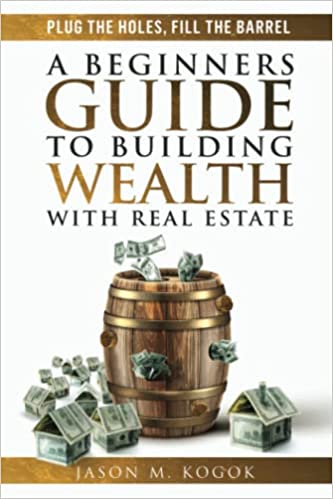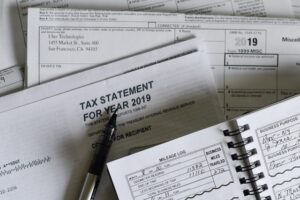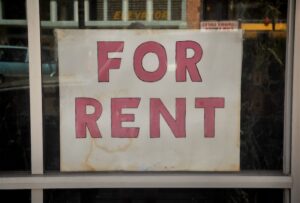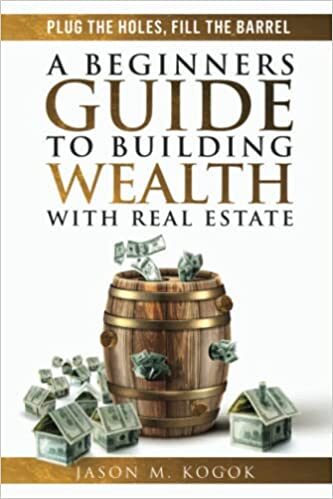Real Estate Investing,
3 Easy steps
By Jason M. Kogok
If you’re like me, I always thought in order to be successful in real estate investing and retire off of my portfolio’s earnings, that I had to own a bunch of homes, or even scarier, dive into commercial or large multi-family investments. It wasn’t until I changed my focus from quantity to quality that my eyes really opened up. As I was growing my portfolio, I realized that I was actually becoming less efficient with all aspects of the business. As I bought more, I had less time to truly be a great investor. Yes, as I bragged to my friends about how many homes I owned, I was convincing myself that I was doing everything right, but I wasn’t. It was at that moment that I decided to really dive deep into the numbers of each and every one of my homes and ask myself, “Am I getting the most out of this investment?” What I realized was that because I was spread so thin, I wasn’t maximizing my returns, thus making me feel like I always needed more homes. So, I did what any good investor does – I adapted and changed my model.
I wanted to be able to retire but do so with less homes and more time. In order to do that, I had to implement a 3-step process. It’s really easy and some investors say they do this, but not all do each one very effectively.
Step 1: Know your number!
I know ‘my number’ down to the penny. This first step is probably the most important,  yet usually the step that is missed so often. So, what is ‘Your Number?’ My number consists of how much money I think I’ll need for retirement and how long I need it to last. That can take some real critical thinking to accomplish, and it’s why so many novice investors just glaze over this step early on. Once you have that number, adjust & revise it each year so that as you approach retirement it gets more and more accurate. Don’t look at it every day – it will drive you nuts. Think of it like a 401k . You look at it on occasion and make some changes. You don’t necessarily adjust it daily for 20 or 30 years until retirement. Once you know your number, you need to see how short you may be if you stay on your current path. There is a good chance you may be short on your current trajectory and if so, that shortage is our gap amount. If you know your gap amount, then you will know how much extra investing you’ll need to do in order to hit your goals. My gap is filled with real estate investing to ensure I hit my number.
yet usually the step that is missed so often. So, what is ‘Your Number?’ My number consists of how much money I think I’ll need for retirement and how long I need it to last. That can take some real critical thinking to accomplish, and it’s why so many novice investors just glaze over this step early on. Once you have that number, adjust & revise it each year so that as you approach retirement it gets more and more accurate. Don’t look at it every day – it will drive you nuts. Think of it like a 401k . You look at it on occasion and make some changes. You don’t necessarily adjust it daily for 20 or 30 years until retirement. Once you know your number, you need to see how short you may be if you stay on your current path. There is a good chance you may be short on your current trajectory and if so, that shortage is our gap amount. If you know your gap amount, then you will know how much extra investing you’ll need to do in order to hit your goals. My gap is filled with real estate investing to ensure I hit my number.
Step 2: Understand how to evaluate your houses!
After two decades of working with investors, I’ve learned a few things. One main thing I’ve learned is that there are many ways to evaluate properties and returns. Each investor has their own set of parameters. I use the following criteria when calculating returns on each property to fill my gap amount.
1) Cash flow –
this metric is always interesting and sometimes I think investors give it too much credit. Trust me, I know the importance of cash flow, both short and long term, as well as how it can make a return on investment look good or bad, however I also see many investors chase cash flow as their sole goal and purchase poor assets. Give cash flow its proper due, but don’t miss the bigger picture. When evaluating cash flow inside of a plan, especially if only owning a few homes, you should ask yourself “How can this cash flow be invested to earn more cash flow?” Don’t just blow your cash flow on
consumer goods, but rather turn them into another investment vehicle. Reinvest your returns.
2) Property Appreciation
– there are 2 types of property appreciation. The first is just natural market appreciation most of us have seen over the past few years. The market just went up and I didn’t necessarily do anything to the asset to earn that increase. The second is appreciation that we create, typically from improving the property. Finding properties that offer both is like double dipping on the same asset. When looking at appreciation, it can be exciting to see the values go up during a sellers’ market and maddening if they dip during a buyers’ market, but the reality is the value only matters on 1 day – the day you sell. This is why looking at my portfolio annually and making adjustments accordingly helps me keep things in perspective. Utilizing both types of appreciation is probably some of the best benefits of owning real estate and can be most impactful if you only purchase a few homes.
3) Principal Pay Down –
“Have someone else pay your debts.” Having a tenant pay your mortgage down is amazing because it occurs as a benefit in any market condition. Doesn’t matter if the market is hot or cold, as long as a tenant is paying me rent towards my mortgage, I benefit. Not too many other assets can boast about positive returns irrelevant of the outside market conditions. Again, keep track of this annually as you analyze your gap amount. Becoming well educated in financing options and how to structure your debts can be such a powerful tool – don’t give more in interest than you need to. If you know your timeline, goals and gap amount, you can make better financing decisions. I think some investors are too quick to run to the safety of a 30-year fixed mortgage when they purchase – then they end up using the property for leverage in the future and replace that mortgage with another anyway.
4) Tax Write Offs –
I don’t claim to be a CPA, that’s above my paygrade, but I know enough about real estate

investment taxes to know there can be some great benefits if you do it correctly. One of the biggest issues I see with novice investors is that they have no long-term tax or exit strategy. They give too much to the IRS because they have poorly planned for the exit of those assets. Understand Depreciation Recapture, Ordinary Income Rates, 1031’s and Capital Gains. The rules say we all have to pay taxes. They don’t say we can’t use those same rules to pay fewer taxes.
5) Leverage Strategies – The reality is that usually the ‘cost of entry’ is steep to purchase real estate rental property. For the average buyer, they would need a 20-25% down payment. That can be quite a bit of money pending your market. However, using leverage strategies, such as turning your primary home into a rental. HELOCs, Cash-Out refinances and short term hard money can all be effective ways to grow in a shorter amount of time if your timeline runway to hit your gap amount is relatively short. Each one has its pros and cons, but don’t be tied to the old mantra of having to save for each purchase. Learn the various ways to use the same money over and over.
Step 3: Become the Amazon of rental properties.
Now, I don’t mean go out and buy a billion dollars’ worth of real estate, but rather become efficient in real estate investing. I think most of us would agree that if I can order just about anything on Amazon and within 24 hours it’s on my doorstep, then they are pretty darn efficient. If you’re going to focus on owning
fewer homes, they have to be run extremely efficiently to squeeze all of the juice out of them. I focus on owning less

homes, but making them extremely efficient, all the way down to painting the inside of every home the same color and using the same brand of faucets and tile for a more efficient repair and tenant turnover process. I also make my rental properties a place that my tenants want to stay by being a great landlord. As a byproduct of being a great landlord, and providing quality rental homes, I reduce vacancy, lower tenant turnover and save myself the time-cost that is incurred when replacing one tenant with another. I also focus on the microeconomics of the area, neighborhood and overall economy much deeper than I had previously. I also have a long-term plan and exit strategy for each home to maximize my returns. The outcome? Each one of my homes has become more profitable. The need to own a lot of homes to hit my gap amount has been diminished. The real benefit? I got my TIME back! I’m doing less work for more money because I stopped listening to the old mantra that you need to own as much as you can. Look, if you want to own a shopping center or apartment complex, you should, I’m not against those at all. I just realized that most investors will never purchase those and some feel like if they can only buy 2-3 homes over 10 or 20 years, that it won’t be enough. It will!
I try to assist the novice and intermediate investors with viewing their properties like individual companies they own. If you owned a company, you would want to run it very efficiently, maximize profits and try to run a business that is desirable to the general public. You wouldn’t go out and start a company to be mediocre; you’d start it to be great. Each of your homes should be great. In real estate investing, you may find yourself focusing on the money earned versus your time involved. The reality is you buy things with time, not money. I don’t trade $500 for my car payment or $3,000 for my mortgage. I trade the number of hours it takes me to earn $500 or $3,000. It is my time that is the real currency. The money I earn is simply a tradeoff for my time and we need to value our time way more than we do. When you evaluate what your gap amount is. Make sure you accompany that with a scale of passivity – that’s simply a scale that compares your money earned as it relates to your time committed. We go in-depth on all these subjects and so much more in our guidebook, Plug the Holes, Fill the Barrel.
The ‘Mom & Pop’ investor doesn’t always have a lot of resources to trust to learn how to really squeeze the juice out of just a few properties, while still having a significant impact on their long-term financial security. If you follow these steps, you may realize you can do more with less too!
https://www.amazon.com/Plug-Holes-Fill-Barrel-Beginners/dp/0578357178
real estate investing
| Intended to be the go-to real estate textbook for novice and beginner investors. This quick-start guide teaches the ABCs of building wealth and financial freedom with real estate investing. While also offering practical explanations, tips and real world examples that you won’t find elsewhere. |
Views: 23


